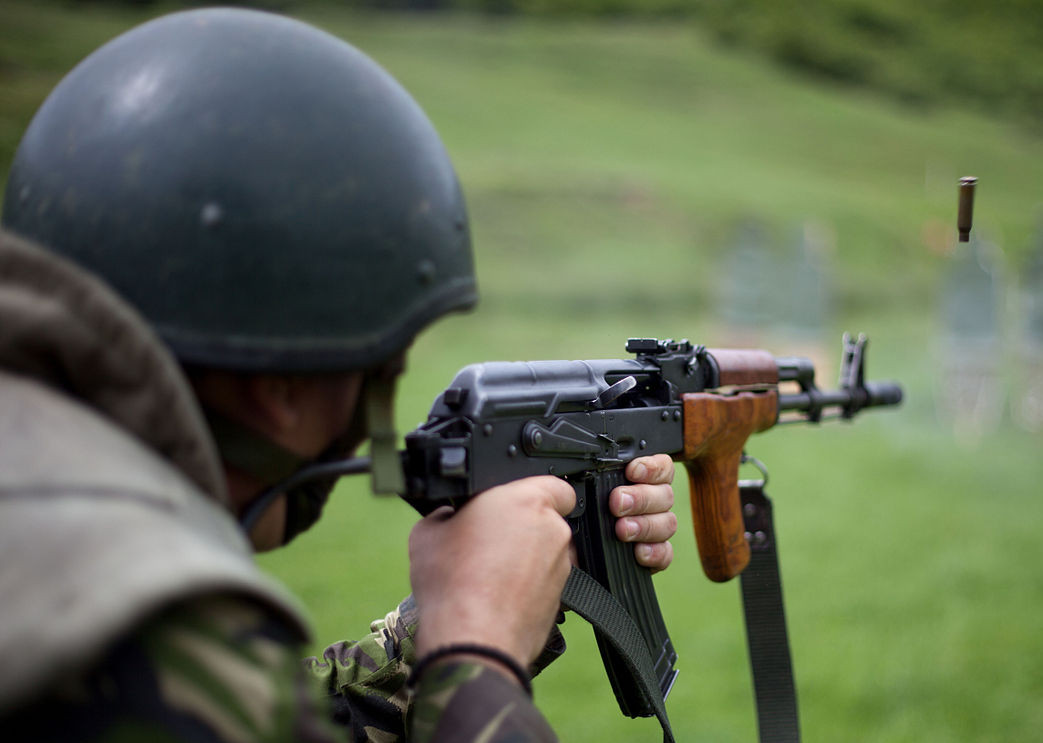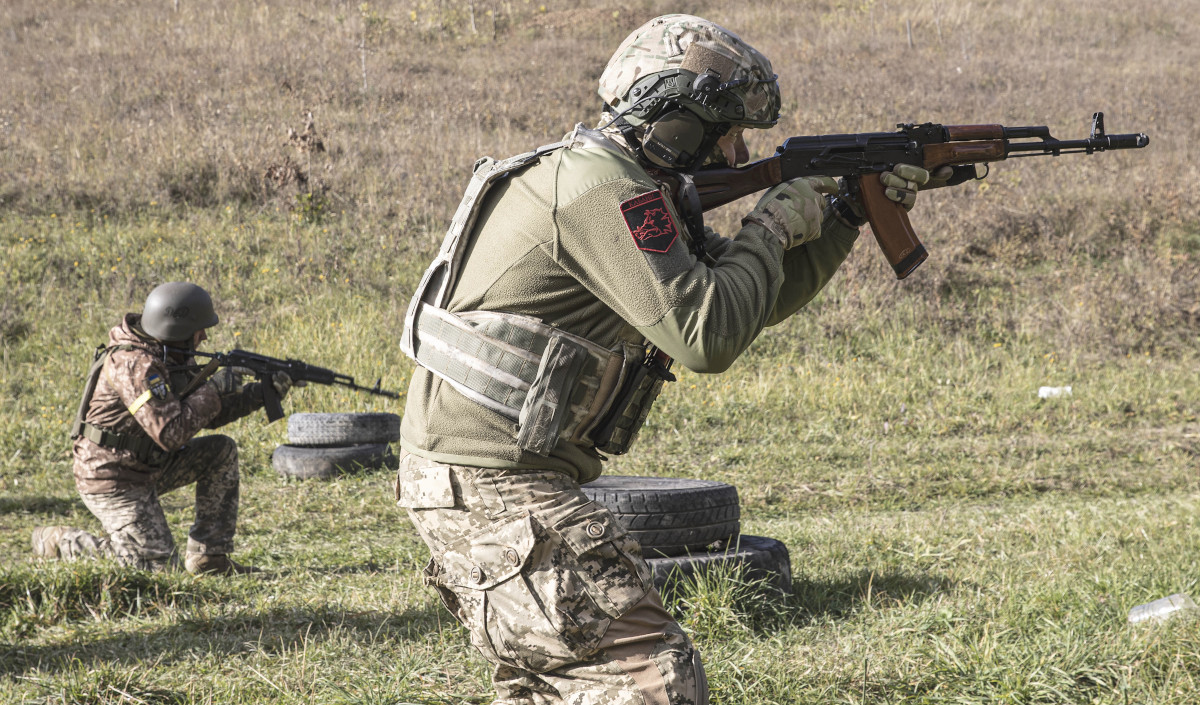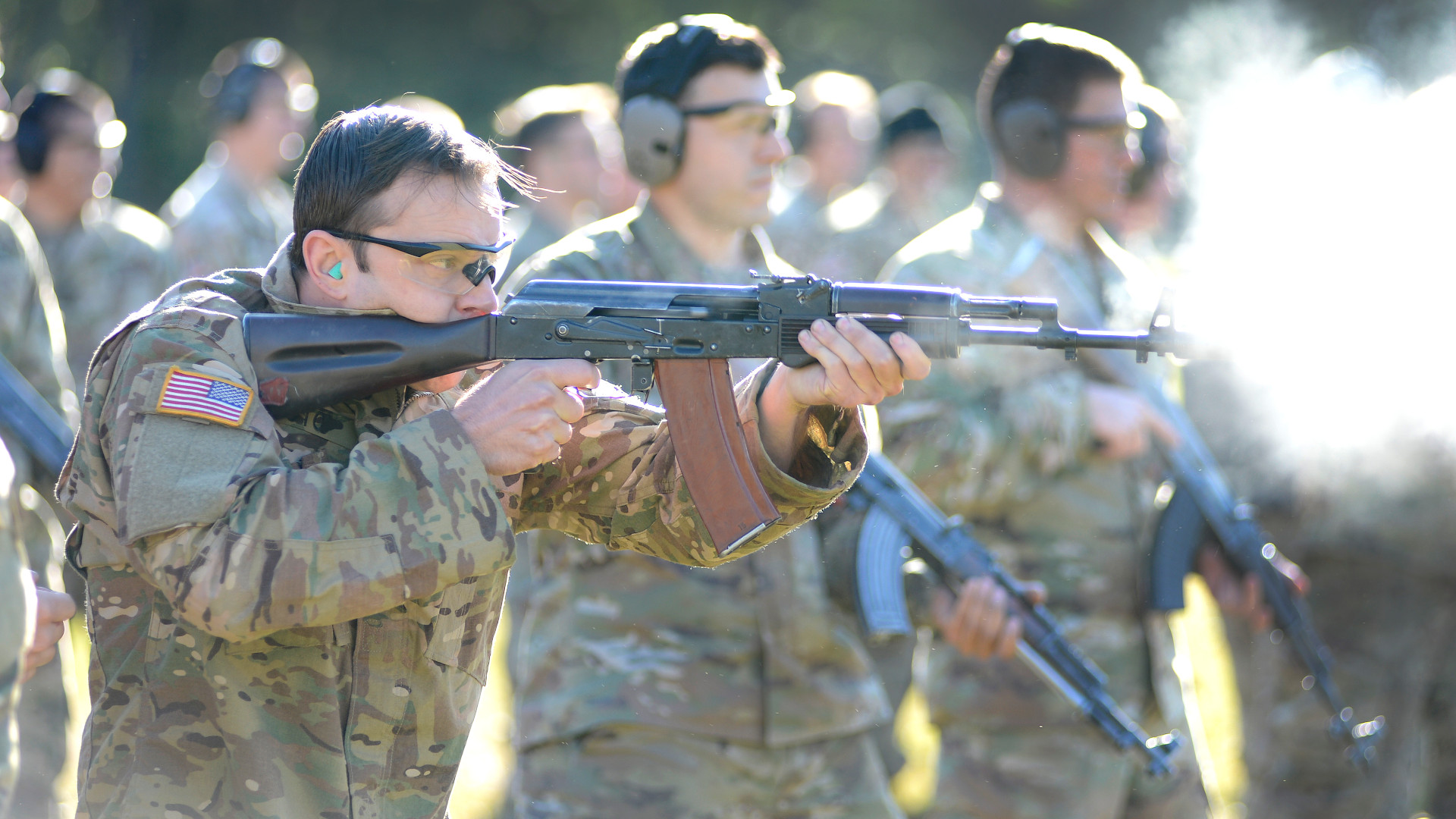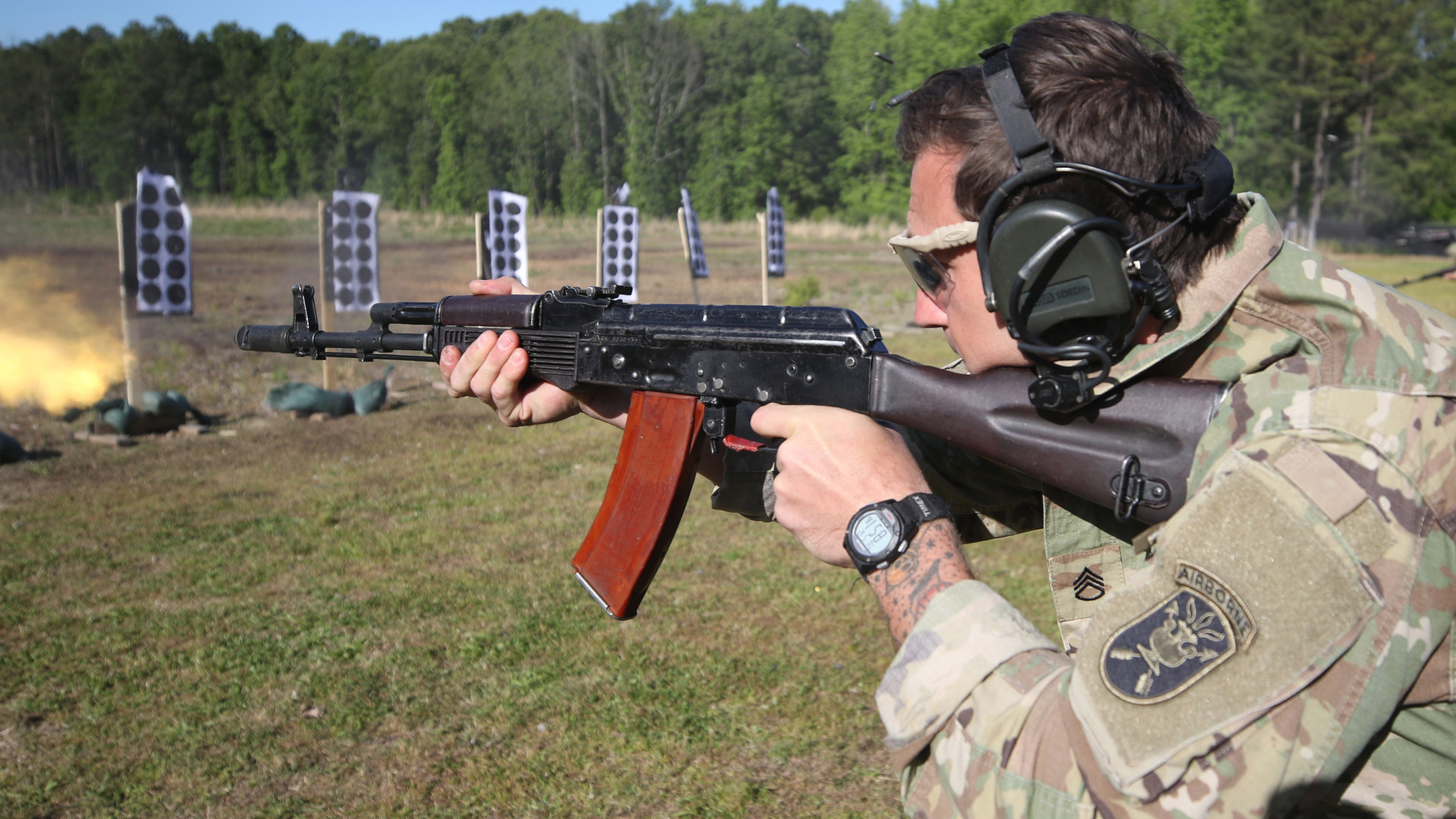The U.S. Army says that if you have stocks of Russian-made 5.45x39mm AK-74 assault rifles, or copies made in other countries, it may be interested in buying them. Why exactly the service might want them isn’t entirely clear, but the AK-74 is one of the predominant standard service rifles in the Ukrainian military. The Army, as well as other branches of the U.S. military, does also maintain stocks of various foreign small arms for use by special operations forces, to arm mock enemy or faux local partner forces during training exercises, and to support various research and development and test and evaluation activities.
The Army Contracting Command-New Jersey (CCNJ) posted a notice “seeking potential sources to supply AK-74-type Kalashnikov Assault Rifles and Support Parts” on the U.S. government’s SAM.gov contracting website yesterday. CCNJ said this posting was made on behalf of the Program Manager for Soldier Lethality (PMSL) and the Combat Capabilities Development Command-Armaments Center (CCDC-AC), but offered no further details about why either entity might be interested in this potential purchase and what the guns might be used for more specifically. The War Zone has reached out to the Army for more information.

The contracting notice also does not say how many of the Soviet-designed AK-74s the Army might be looking to buy in total, but does offer specifics in terms of what the Army is looking for in terms of the weapons themselves. “For the purposes of this effort, the AK-74-type Kalashnikov Assault Rifle is defined as follows: One (1) AK-74-type Kalashnikov Assault Rifle with fixed stock and approx. 16 inch barrel.”
A standard array of accessories to go along with each gun – four magazines, one cleaning kit, one oil bottle, one shoulder sling, and one user’s manual – is also desired. However, the Army says it will “recognize that the availability of these accessories is dependent on the condition and source of the rifles and may not be included.”
CCNJ’s notice is somewhat confusing in terms of what alternative guns it says the Army might be willing to accept in lieu of actual Soviet/Russian-produced AK-74s.
“Weapon systems of interest are those that follow the design pattern of rifles from Romania (eg. md.86), Russia (eg. AK-74), and East Germany (eg. MPi AK74). Weapons manufactured elsewhere are also desirable provided they adhere to the AK-74 pattern,” it says. “Conversely, Bulgarian AR-SF and Polish Tantal-pattern rifles are not considered AK-74 pattern weapons for the purposes of this Sources Sought notice.”
East German MPi-AK-74s are direct copies of the AK-74, which were produced in that country under license from the Soviet Union during the Cold War. However, the Romanian PA md. 86 is something of a hybrid of the earlier 7.62x39mm AKM design and the AK-74. It’s not clear why those guns are acceptable, but AKM-derived Polish Tantals are not. Despite the similarities in external appearances, a true AK-74 only has around 50 percent commonality in its parts with the AKM.

The Bulgarian AR-SF and other AK-series-based designs made by the Arsenal company in that country only appear to be currently offered in the NATO-standard 5.56x56mm and Soviet-designed 7.62x39mm calibers, rather than the AK-74’s 5.45x39mm, which could explain the issue there. Bulgaria did also license-produce actual AK-74s during the Cold War, any remaining stocks of which would be acceptable under the definitions provided in CCNJ’s recent contracting notice.
“Sources are sought for functional AK-74 weapon systems. New Production items are preferred. Rifles in new old-stock/unissued, refurbished, or surplus conditions are satisfactory as long as they are determined to be safe-to-fire,” the contracting notice adds. “Rifles assembled from previously-used or loose parts (i.e. ‘parts kits’) are also of interest.”
There are certainly various potential secondary sources of AK-74s and clones, with the guns having been exported to dozen of countries over the years. When it comes to new production guns, Russia continues to be the main producer of new AK-74-type rifles chambered in the 5.45x39mm cartridge, which appears to be a central requirement for the Army. Various companies elsewhere around the world, including in the United States, do continue to make various new AK-style rifles or assemble examples from parts kits. While some of these are in 5.45x39mm, it is easier to find them in the far more popular 5.56x45mm and 7.62x39mm calibers.
As already noted, what the Army plans to do with any AK-74s it buys is not immediately clear. Transferring them to the Ukrainian armed forces is certainly one possibility. At least early in the conflict, Ukrainian forces, especially volunteer Territorial Defense Forces units, were often short on small arms. Troops were sometimes seen armed without outright antique World War I and World War II-era machine guns. It’s unclear whether things are as dire as they sometimes initially appeared, but small arms have been and continue to be among foreign military aid packages for Ukraine’s military.

Just today, the Pentagon announced a new aid package for Ukraine’s military that includes, among other things, unspecified small arms and 2,750,000 rounds of related ammunition. This tranche of aid is a so-called “draw-down,” meaning the items are coming directly from the U.S. military’s existing inventory, but additional weapons and other materiel are also being purchased on Ukraine’s behalf via a separate mechanism known as the Ukraine Security Assistance Initiative (USAI).
At the same time, the Army and other elements of the U.S. military routinely buy and otherwise acquire foreign weapons and other military equipment for a host of purposes. This includes operational use by special operations forces units, to arm individuals standing in for opposing forces (OPFOR) and friendly locals during training exercises, and to support research and development and test and evaluation programs.

If the guns are indeed bound for Ukraine, it is perhaps somewhat ironic that the U.S. Army is now looking to potentially buy Russian-made rifles to help the Ukrainians fight back against Russia’s invasion. Regardless of what the intended purpose of this purchase of AK-74s might be, it may well prompt a response from the Russian government.
Authorities in Russia have for years been particularly critical of U.S. government efforts to offer or otherwise facilitate alternative sources of Soviet-designed small arms and small arms ammunition to allies and partners, claiming that the real goal is to reduce the country’s share of the international arms market. More recent reports have suggested that Russia’s arms exports could be headed nosedive due to broad and crippling Western sanctions over its invasion of Ukraine and the reputational damage resulting from the poor performance of Russian forces in the conflict.
Whatever the Army might want these AK-74s for, they certainly won’t be buying them directly from factories in Russia.
Update 10/31/22:
The U.S. Army’s Project Manager for Soldier Lethality at Picatinny Arsenal in New Jersey has now responded to The War Zone‘s queries regarding this contracting notice. The office first stressed that the notice was “essentially a market survey” and “not a solicitation to purchase AK-74 weapons and spare parts.”
“The announcement wants to know how much an AK-74 and spare parts by those who respond,” a spokesperson further explained in a statement. “The Army does train Soldiers to be experts on foreign made weapons. If and when the Army were to buy AK-74s for training, it will know much it costs for budgetary purposes.”
The War Zone has now reached back out for more details about what training requirements prompted this market survey.
Contact the author: joe@thedrive.com
